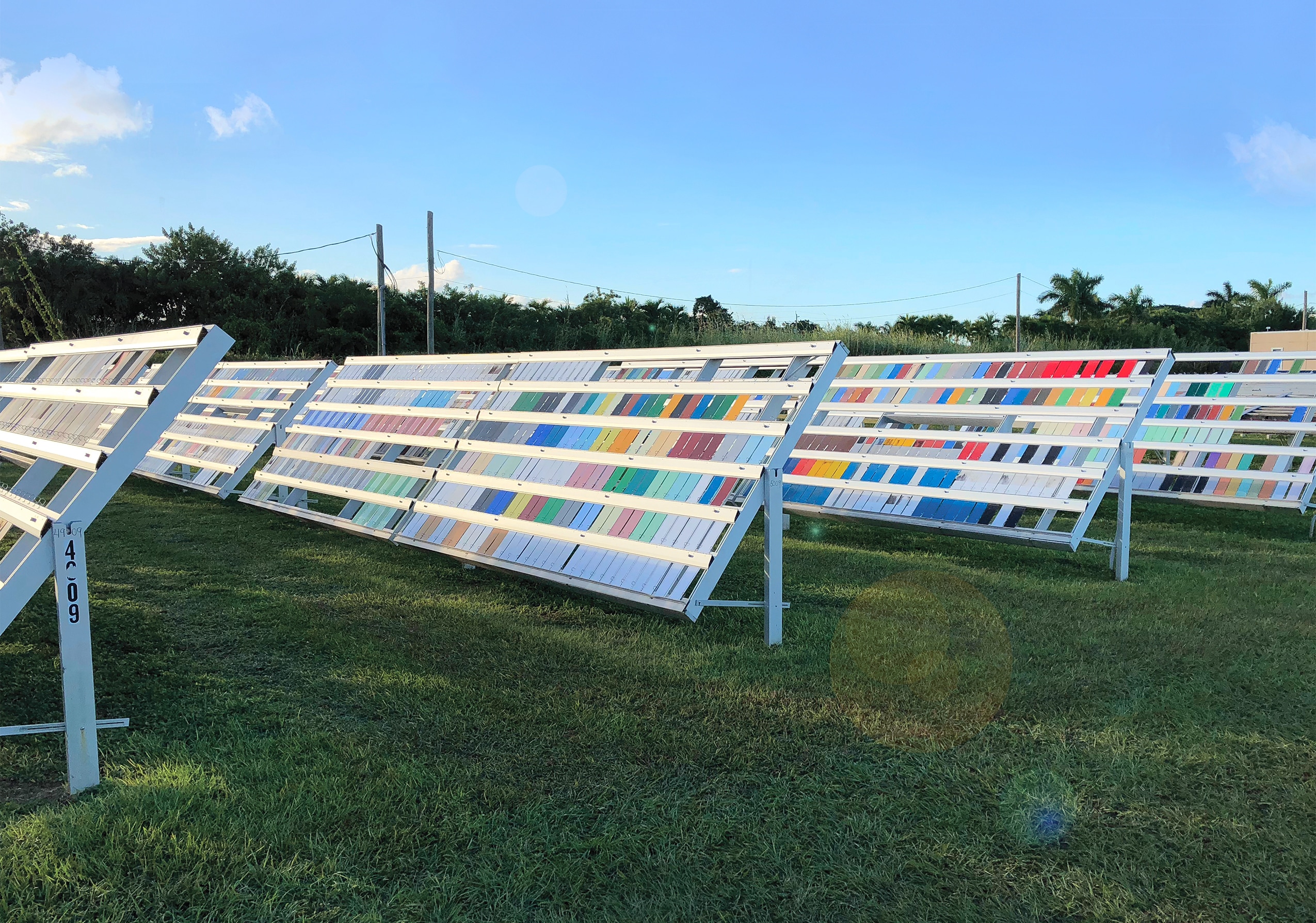
[Photo: Courtesy of APV Engineered Coatings]

NeverFade® coatings from APV Engineered Coatings come in two main topcoat formulations that incorporate Kynar Aquatec®—the high-performance PVDF polymer engineered by Arkema. Compared to urethanes and acrylics, Kynar® PVDF is in a class by itself. Outstanding characteristics include extreme resistance—to ultraviolet light, radiation, abrasion, high thermal exposure, and a wide range of aggressive chemicals—as well as easy application with industry-standard spray equipment, and adhesion to many different surfaces, among other benefits. But what exactly is PVDF, and what role does APV’s rigorous research and development process play in making it a successful component of NeverFade? The company’s product development manager, Lon Bauer, explains.
Polyvinylidene fluoride, or PVDF, has been around for 50-plus years. The extremely durable thermoplastic polymer, similar to Teflon, is offered in a variety of grades, and the NeverFade line of coatings contains several types manufactured by Arkema under the renowned brand name Kynar.
Kynar Aquatec, Arkema’s water-based PVDF emulsion, is an important component in the two main topcoat formulations of APV’s water-based NeverFade coatings for metals and porous substrates like stucco, EFIS, masonry, concrete, vinyl, and wood. Besides having the same outstanding weatherability and durability characteristics of coatings with Arkema’s original factory-applied grade, Kynar 500, its versatility is unparalleled. And thanks to uncommonly low VOCs, NeverFade can easily be field-applied in states with even the harshest environmental regulations.

[Photo: Courtesy of APV Engineered Coatings]
When it comes to formulating PVDF coatings, the key to consistent high performance is years of testing. Before APV coats surfaces in the field with a primer and compatible NeverFade topcoat, we always test adhesion. First, to the underlying substrate and even prior to this, extensive intercoat adhesion and compatibility testing have been conducted on the topcoat to the primer. Other durability tests follow—several ASTM tests for abrasion, hardness, and impact resistance, another for mold and mildew growth, and yet another that involves 10,000 hours of UV light exposure and humidity to spot color change, gloss retention, and chalking.
For metal applications, hours of salt spray testing are conducted to identify blistering and corrosion formation. We even work with a third-party lab that provides actionable data culled from our extensive outdoor exposure testing, during which we expose coated panels in all climates. One Florida home was blasted with sand and debris during the hurricanes in 2017 and 2018, seven and eight years after NeverFade was installed. Even after nine years of south Florida weather, its facade looks as good as new.
Whether it’s being put through its paces in a controlled lab setting or exposed to a real-world scenario, one thing is clear: APV’s NeverFade really works, and its incorporation of Kynar PVDF is a big reason why.

